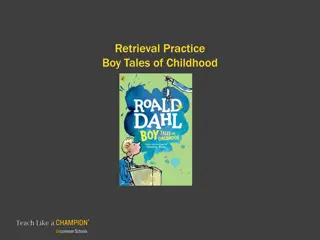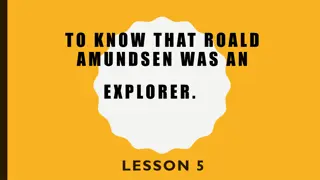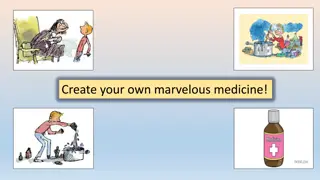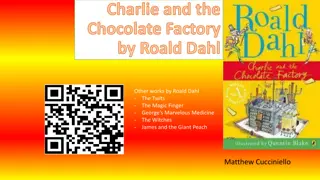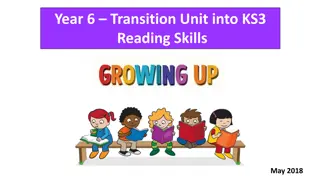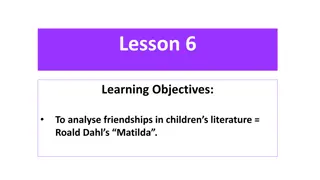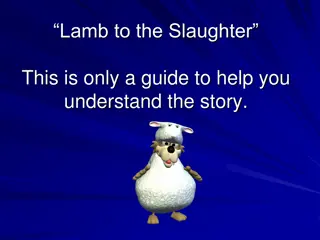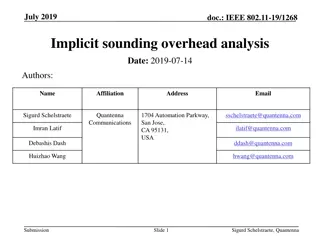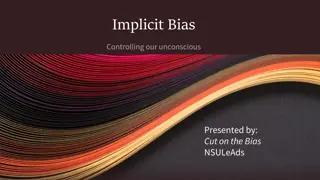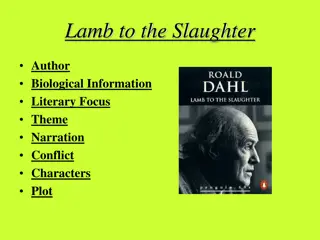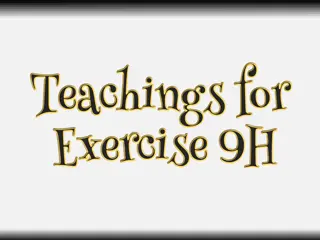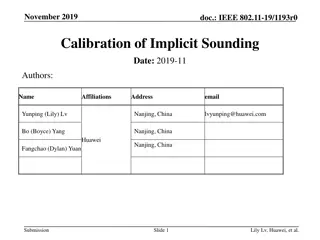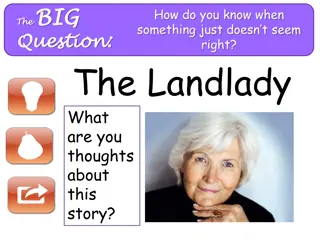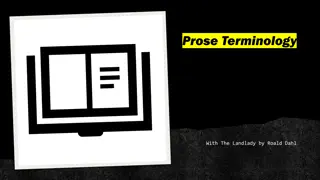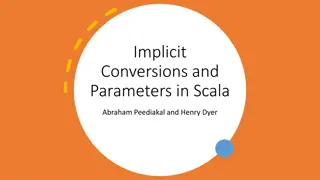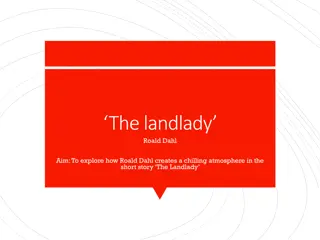Exploring Implicit Meaning in "The Landlady" by Roald Dahl
Develop inference skills by exploring the implicit meaning in the short story "The Landlady" by Roald Dahl. Tasks include reading the story, analyzing characters and setting, identifying positive phrases, exploring writing techniques, and comparing the text to a short film adaptation.
Download Presentation

Please find below an Image/Link to download the presentation.
The content on the website is provided AS IS for your information and personal use only. It may not be sold, licensed, or shared on other websites without obtaining consent from the author. Download presentation by click this link. If you encounter any issues during the download, it is possible that the publisher has removed the file from their server.
E N D
Presentation Transcript
The Landlady Roald Dahl
Finding the implicit (suggested) meaning requires you to use the clues the writer gives you to find information that they do not directly tell you. Learning Objective: to develop our inference skills by exploring IMPLICIT meaning.
Task 1: Read the short story, The Landlady by Roald Dahl.
Task 2: Answer the following questions about the opening paragraphs of the short story. 1. 2. 3. 4. 5. 6. 7. 8. 9. 10. How does the young man walk down the street? Write down a quote to describe how he is walking. What are the names of the main characters in the story? Where is the story set (the setting)? What time of year is Roald Dahl implying? How do you know? Write down a quote to support your understanding. Why is he travelling away from home for what purpose? What is the name of the establishment that is recommended by the porter? How old is the young man? What is he wearing? What do the clothes he is wearing say about his type of job? What do you think he does?
Task 3: Positive Phrases: Using lines 1-7 1. Find a positive phrase about the setting (place) at the start of the story. Write down the positive phrase. 2. What does the phrase imply (suggest) to readers about the place Billy has moved to? Using your own words, describe the place. Does the writer imply that the place is safe?
Task 4: Exploring writing techniques to communicate IMPLICIT meaning. Make a point about a technique Support with a short quote Briefly explain the literal meaning of the words - why they interest the reader/ why they have been used. This shows that it is a freezing cold night. It would have been painful for Billy to be outside and he would be keen to find a nice warm place to stay. Give 2 deeper readings as to how it makes the reader feel. Zoom in on a key word and give a different interpretation Dahl uses the noun blade in the simile, which makes the wind seem almost like a weapon, cutting into Billy s face. It could make readers suspect that Billy is going to be in danger. The writer uses an effective simile to describe the weather at the start of the story. He tells us that it was deadly cold and the wind was like a flat blade of ice The writer also uses the adjective deadly to describe the air. This backs up the feeling that something bad is going to happen. It adds the impression that Billy might not be safe in Bath.
Task 5:Comparing the text to the short film. The Landlady Roald Dahl https://www.bing.com/videos/search?q=Roald+Dahl+the+Landlady+Story&&view=detail&mid=A4708103BBB3380CE DFDA4708103BBB3380CEDFD&&FORM=VRDGAR&ru=%2Fvideos%2Fsearch%3Fq%3DRoald%2BDahl%2Bthe%2BLandl ady%2BStory%26FORM%3DHDRSC3 DETECTIVE TIME: Similarities and Differences Whilst watching the short film make some notes about the similarities and differences between the text and the film: For example: Does Roald Dahl mention a conversation between Billy and the Vicar on the train? Are Billy s clothes the same colour in the film as stated in the text?



